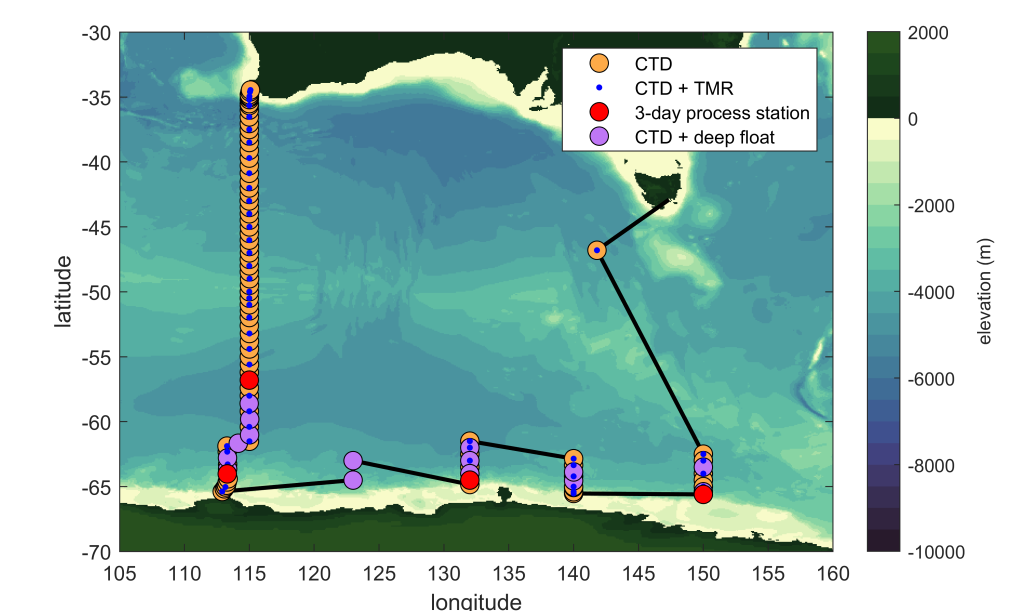Australian GEOTRACES cruise GS05 is sailing in the Southern Ocean
The Australian GEOTRACES cruise GS05 on RV Investigator is sailing in the Southern Ocean. The cruise departed from Hobart (Tasmania) on 3 January 2024 and is heading south to the edge of the Antarctic ice. The cruise will return port in Fremantle on 2 March 2024. The main aim of this 60-day cruise, known as MISO (for ‘Multidisciplinary Investigations of the Southern Ocean’) is to improve understanding of how the Southern Ocean region influences the Earth system and use this knowledge to improve climate forecast models.
MISO will characterise the properties of aerosols, clouds, radiation, and precipitation over the Southern Ocean south of Australia and investigate how they are shaped by interactions between the ocean, atmosphere and biosphere. Repeat observations will be used to discover how and why the region is changing, and the consequences of Southern Ocean change for climate, biogeochemical cycles, biological productivity, and the future of the Antarctic Ice Sheet. MISO will provide new insights into the processes controlling the availability of iron and other trace elements and their role in regulating productivity in the Southern Ocean and the production of marine organic aerosols that can drive cloud nucleation. The observations and insights gained from the voyage will be used to develop, test, and implement new parameterisations for models used for weather forecasts and climate projections.
Main science questions that will be addressed are:
- What processes and interactions account for the unique properties of the atmosphere over the Southern Ocean and how can they be better represented in models to reduce large biases in clouds and radiation?
- How do biogenic sources influence the aerosol, cloud, precipitation, and radiation properties of the Southern Ocean atmosphere and how can they be parameterised in models?
- How much heat, momentum, and carbon are exchanged across the air-sea interface, how is the exchange influenced by surface waves, and how can these interactions be better represented in models?
- How and why is the ocean inventory of heat and carbon evolving in time and what are the impacts on seal level rise and ocean acidification?
- What physical and biogeochemical processes control primary productivity, carbon export, and production of biogenic precursors?
- How is the Southern Ocean changing near Antarctica and what are the implications for the stability of the Antarctic Ice Sheet and the formation of Antarctic Bottom Water?
Read CSIRO’s new about the cruise: https://www.csiro.au/en/news/All/News/2024/January/RV-Investigators-longest-voyage-to-try-and-solve-Southern-Ocean-puzzle

Co-Chief Scientists: Dr Steve Rintoul of the Australia’s national science agency (CSIRO) and the Australian Antarctic Program Partnership (AAPP) and Dr Annie Foppert of AAPP at the University of Tasmania.
GEOTRACES Scientist: Andrew Bowie, Antarctic Climate & Ecosystems (CRC), University of Tasmania.
The cruise is supported by the Australian Antarctic Program Partnership (AAPP).
